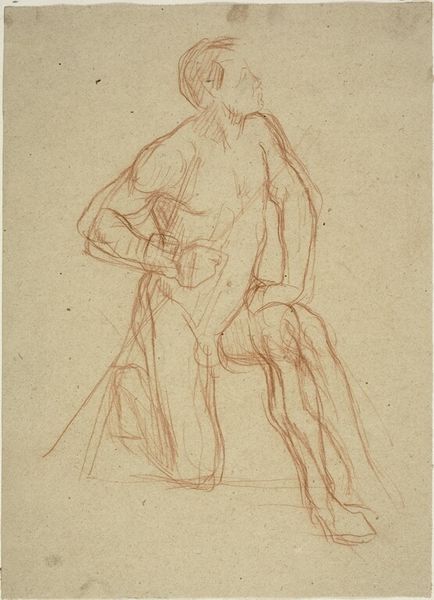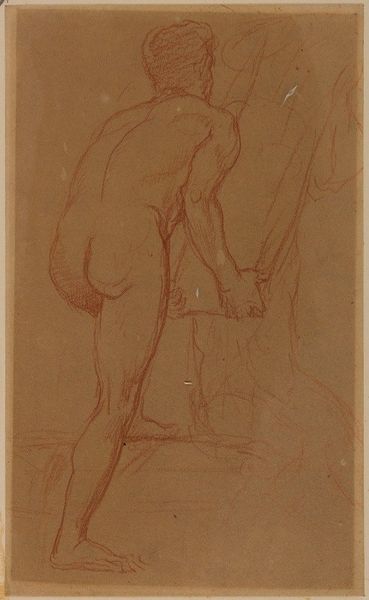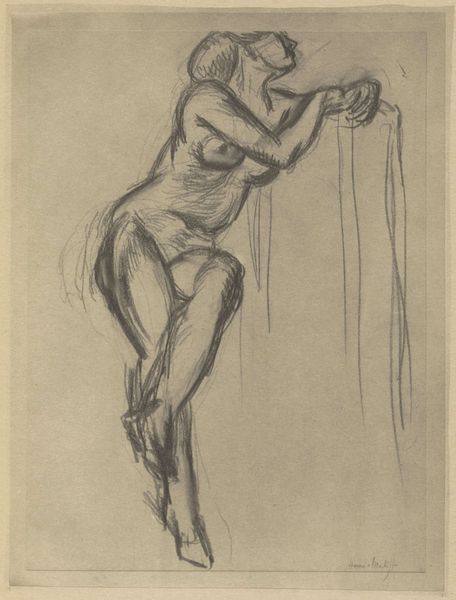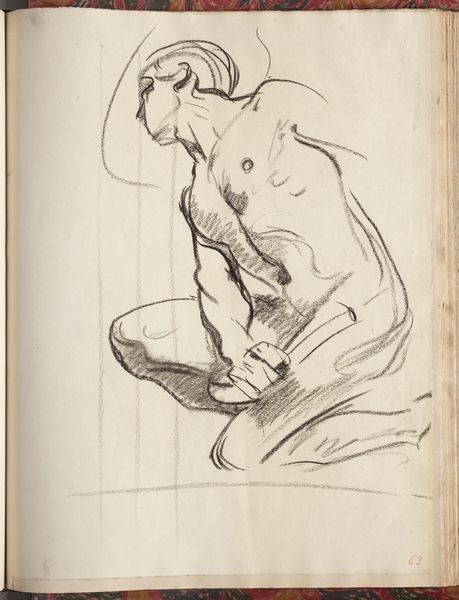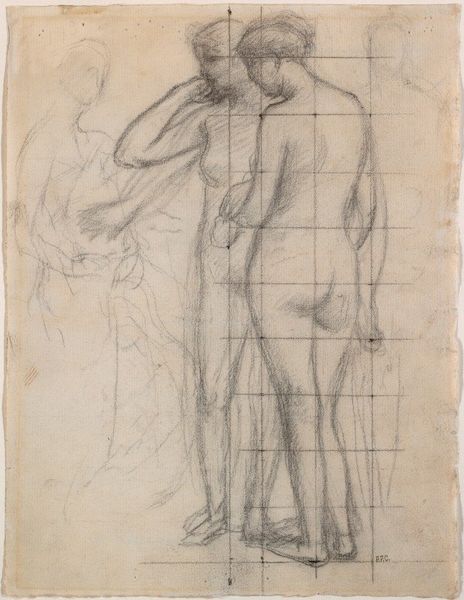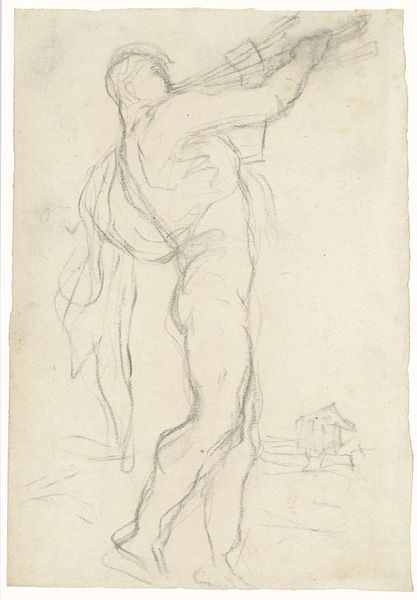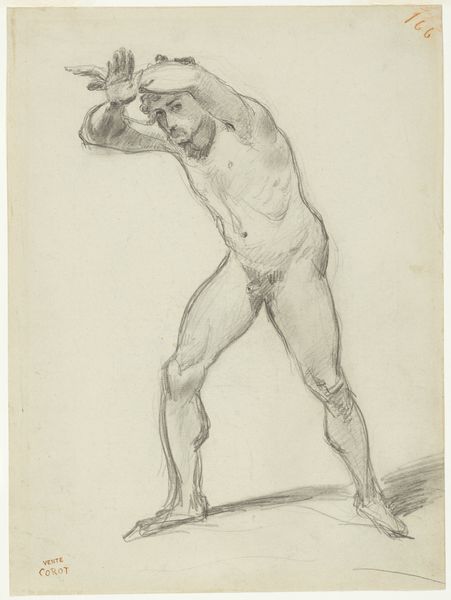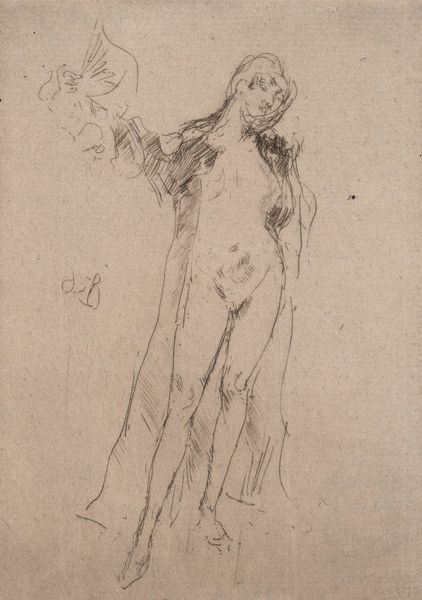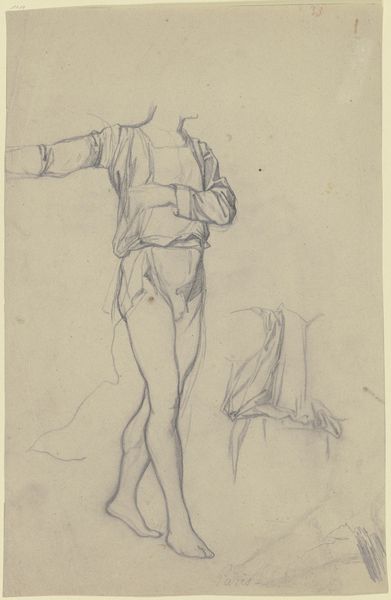
drawing, print, paper, pencil, chalk, graphite, black-chalk
#
drawing
# print
#
pencil sketch
#
landscape
#
figuration
#
paper
#
pencil
#
chalk
#
water
#
graphite
#
pencil work
#
academic-art
#
black-chalk
#
realism
Dimensions: 295 × 212 mm
Copyright: Public Domain
Editor: Here we have "The Woodchopper" by Jean-François Millet, created around 1848 to 1850. It's rendered with pencil and black chalk on paper, a preparatory drawing I believe. It evokes a feeling of raw power and labor, almost like a study of the human form in motion. What do you see when you look at this piece? Curator: What immediately strikes me is the dynamic arrangement of lines. Note how Millet utilizes hatching and cross-hatching to define the figure’s musculature and the suggestion of the surrounding environment. The stark contrast between light and shadow contributes to the dramatic tension. It also demonstrates a sophisticated understanding of anatomical form through the pencil and chalk mediums. Consider how the strategic use of blurring softens edges, lending a sense of atmospheric perspective to the study. Editor: That's fascinating. I hadn’t thought so much about how the pencil work itself created that sense of movement, how blurring is used for atmosphere, almost like sfumato. So, it's less about the scene itself and more about the arrangement of line and shadow? Curator: Precisely. While we can interpret the figure and setting, the power of this piece truly resides in its formal elements: the gestural lines, the manipulation of light, and the interplay between precision and ambiguity. The semiotic readings begin in the contrasts, like figure-ground relations. Editor: I see. This has made me think about how crucial medium is to capturing a subject's energy, like with charcoal here. Thanks! Curator: A fruitful observation! Focusing on how artists work with form in studies can illuminate how such effects translate into their larger canvases.
Comments
No comments
Be the first to comment and join the conversation on the ultimate creative platform.
